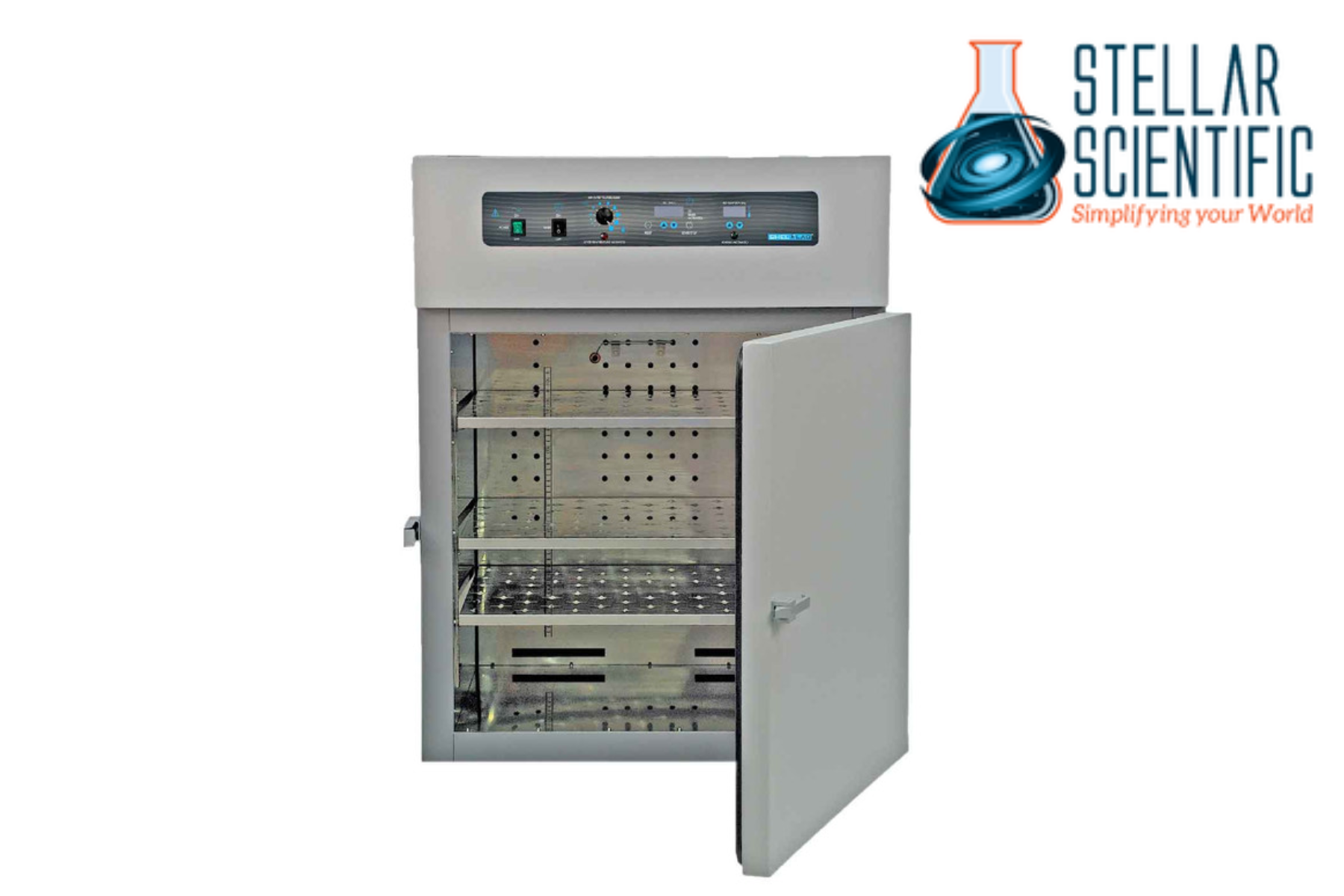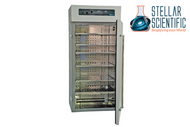Forced Air Lab Ovens That Keep Your Process on Track
22nd Jul 2025
In the symphony of laboratory equipment, forced air ovens are the percussionists, quietly reliable, rhythmically consistent, and critical to the performance. Whether you're drying glassware, curing adhesives, sterilizing instruments, or testing material properties, maintaining uniform heat is non-negotiable. Inconsistencies are the enemy of good data, and a quality forced air oven ensures your process stays perfectly in tune.
Forced air lab oven differ from their gravity convection cousins by actively circulating heated air using an internal fan. This forced airflow creates a uniform temperature profile, reducing hot and cold spots within the chamber and enabling faster, more consistent heat transfer.

What Is a Forced Air Lab Oven?
A forced air oven, sometimes referred to as a mechanical convection oven, uses an integrated blower or fan to actively circulate heated air throughout the chamber. This circulation accelerates temperature stabilization and ensures that every shelf, every beaker, and every sample feels the same comforting embrace of consistent heat.
The key benefits? Speed, precision, and reproducibility like baking a soufflé that actually rises, every time.
These ovens are used across scientific disciplines: materials science, microbiology, chemistry, pharmaceutical development, and even electronics testing. When timing, temperature, and uniformity matter, forced air ovens are the instrument of choice.
Why Forced Air Matters
1. Unparalleled Temperature Uniformity
Gravity may be a wonderful force in nature, but it's not great at evenly distributing heat. Forced air oven combat stratification, those pesky hot and cold layers that can develop in passive systems, by ensuring that air moves throughout the chamber continuously. That means your samples on the top shelf experience the same conditions as those on the bottom. No favoritism here.
This is particularly valuable for processes like:
- Drying filters or glassware where consistent results are required.
- Thermal testing of materials that could warp, fail, or change composition with uneven heating.
- Sterilization of tools and samples, where even one degree of variance could compromise the entire batch.
2. Faster Ramp-Up and Recovery Times
Time is the one reagent you can’t order more of. Forced air ovens heat up faster than gravity ovens because the moving air accelerates heat transfer. And when you open the door to check on your samples (you know you will), the oven recovers to its set point more quickly.
This reduces overall cycle times and increases throughput, because in science, efficiency isn’t just appreciated, it’s published.
3. Enhanced Reproducibility
A process is only as good as its repeatability. Forced air ovens provide consistent thermal conditions day in and day out, meaning the experiment you ran last week can be duplicated tomorrow with the same expected results. This is essential for:
- QC/QA testing
- Protocol-driven R&D
- Regulatory-compliant workflows
It’s like having a thermostat that never forgets your favorite temperature, except it’s keeping your reagents toasty, not your toes.
Applications That Demand Consistency
Forced air ovens are as versatile as a well-prepped pipette set. They serve a wide variety of use cases, including:
Drying and Curing
Drying slides, filters, or powders requires even airflow to avoid localized overheating or underdrying. Curing adhesives or coatings in electronic components? You want even heat distribution to avoid cracks or delamination.
Sterilization
While not a replacement for autoclaves, dry heat sterilization of glassware or metal tools is sometimes preferred. Forced air ensures that every inch of the surface is exposed to the necessary temperature for the necessary time.
Stability Testing
In pharmaceutical and cosmetic industries, products are exposed to controlled temperatures to simulate long-term storage conditions. The precise and stable environment of a forced air oven makes it the perfect tool for the job.
Material Stress Testing
Need to determine how polymers behave under heat? Want to measure the degradation point of a compound? A forced air convection oven provides the stable environment needed for critical stress tests and thermal aging experiments.
Choosing the Right Forced Air Oven
Not all ovens are created equal (some are barely good at making toast, let alone running analytical procedures). When selecting a forced air oven, consider the following features:
Temperature Range and Stability
Look for ovens with tight tolerances; ±1°C is ideal for most lab processes. Make sure the oven’s maximum temperature is comfortably above your protocol’s needs to avoid thermal fatigue.
Chamber Volume and Design
A compact bench-top oven may suffice for routine work, but high-throughput labs will need larger capacity models. Stainless steel interiors are easier to clean and resist corrosion from volatile chemicals.
Programmable Controls
Digital controls and programmable timers allow for precise automation of complex thermal cycles. It also keeps users from hovering nearby and muttering at the thermostat.
Safety Features
Over-temperature protection, double-wall insulation, and temperature alarms add an extra layer of security, because nobody wants their polymer samples to unexpectedly become charcoal.
Airflow Direction
Some ovens feature horizontal airflow, others vertical. Your sample type will determine what’s most effective. Horizontal flow is better for uniformly loaded shelves, while vertical may be advantageous for lighter samples or irregular shapes.

Best Practices for Operation
- Preheat the oven to your desired setpoint before loading.
- Do not overcrowd the chamber; allow space around samples for airflow.
- Use heat-resistant containers and avoid plastic unless rated for oven use.
- Regularly clean the chamber to prevent buildup that can impede airflow.
- Calibrate periodically to maintain accurate temperature control.
Your oven is not a closet; don't treat it like one. Respect the airflow, and it will reward you with performance.
Forced Air vs. Gravity Convection: A Brief Comparison
While gravity ovens are suitable for simple drying and warming tasks, forced air models are better for:
- Faster drying times
- Improved uniformity
- Lower variability across the chamber
- Enhanced repeatability
Gravity ovens may be quieter and slightly more energy-efficient, but when precision matters, forced air is the clear winner.
About Stellar Scientific
At Stellar Scientific, we believe lab equipment should work as hard and as precisely as the scientists who use it. That’s why our selection of mechanical convection oven is curated for reliability, performance, and long-term value. Whether you’re drying, curing, sterilizing, or stress-testing, we offer a range of ovens built to keep your process on track without missing a beat.
Our full product line spans essential lab equipment, from ovens and incubators to centrifuges, pipettes, and lab consumables. We pride ourselves on providing top-quality tools backed by fast shipping, responsive support, and a no-nonsense approach to scientific excellence.

